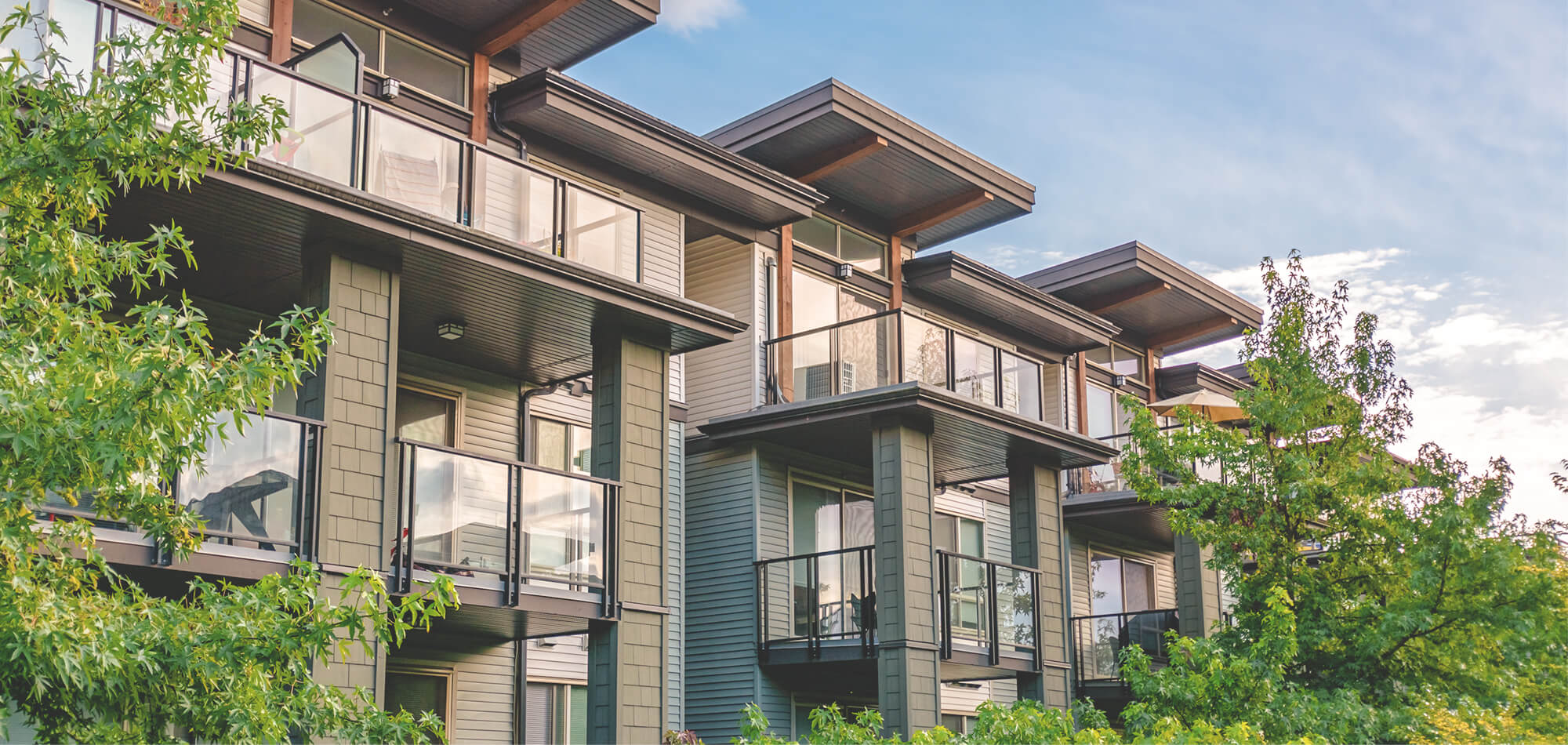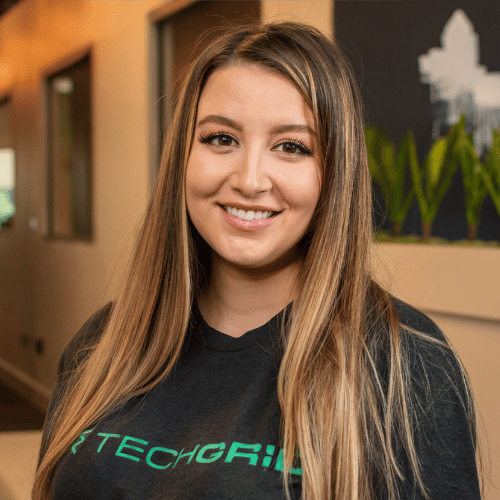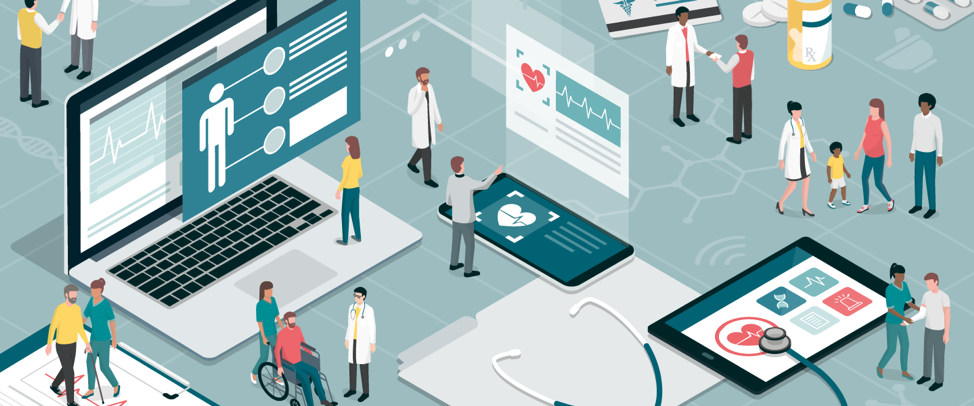
The senior living industry is going through a digital transformation and with the expected increase of adults looking for continuing care, planning for WiFi is more important than ever.
There is a common misconception that the senior community possesses a great resistance to technology, and although there is a notable digital divide between younger and older Americans, many seniors still have a close relationship with the digital world.
According to the Pew Research Center, internet adoption in early 2000 showed that only 14% of seniors were internet users, but today, over 67% of adults 65+ say that they go online. Also, those who use the internet tend to view the technology in a positive light and incorporate it into their everyday lives. Essentially, seniors are using technology way more than we think and they are loving it.
Those adults who are currently in their 40s, 50s, and 60s are the fastest growing groups on Facebook and online dating.
“[Seniors] are the largest users of online financial services, medical information sites, and e-readers,”
- Genevieve Bell, the vice president of Intel.
Continuing Care Retirement Communities (CCRC) recognize that here in the next few years, they will be encountering a different market who will expect a high-quality, luxury experience which will include state-of-the-art facilities that support cloud-based applications, IoT devices, and WiFi networks.
The Projected Growth
As the last of the Baby Boomers are reaching 65+ , the number of senior Americans are projected to more than double from 46 million today to over 98 million by 2060!
That astounding growth projection for the aging U.S. populations not only presents a challenge for CCRCs, but also an interesting investment opportunity in new technology. We are talking about the technology that gives streamlined medical information for care givers, a better quality of life for seniors, and a greater peace of mind for loved ones.
Many luxury CCRCs are realizing an expectation to deliver digital services, not only to enhance the experience, but also to captivate a delaying market. Due to innovative technology in home assistance, such as Amazon’s Alexa, seniors are staying in their homes longer, which is leading to extreme social isolation.
As we all know, isolation can increase risks of mental health issues including depression, dementia, social anxiety, and low self-esteem. No matter your extroversion or personality, humans are social creatures who need human contact to thrive! In the end, this will lead to nurses and assistants having to deal with more mental health issues when these adults finally reach their facilities.
We can prevent this by creating a demand through planning for the integration of modern facilities. So we’re beginning to see the adoption of innovative designs that offer bright, open environments that offer modern digital comforts, to contrast from the stereotypical “nursing homes” from the 1900s.
“In fifteen years, I want to see seniors moving into our communities sooner because they ‘want to’ not because ‘they have to,’”
- Thomas Wellner, President and CEO of Revera.
Boomers want things personalized for them without being defined by their disability. They essentially will need to receive assistance without feeling like they're like living in a senior community. The bar is being raised and many CCRCs expect to see more environments with a blend of services (combining both hospitality and healthcare) in the next 10 years.
Creating that desire is imperative; therefore, it is important for facilities to stay focused on the expectations of urban consumers because that’s where the untapped opportunity is found.
Remarkable Advancements in Technology
Everyone uses technology to spread knowledge, make tasks easier, and make systems more efficient. Yet what is even more impressive is the industry-specific technology that is transforming lives—especially when it comes to senior living.
Majority of young adults use technology for academic, job-related, and social purposes—or even just for a good laugh. However, technology plays a different, more integral part for senior Americans. Whether it is helping them become more independent or allowing access to life-dependent information, it is transforming their quality of life.
Some Technologies to Consider in Continuing Care Retirement Communities:
- Automation Systems which allow for management of lighting and temperature control inside residence halls such as Evolve and Control4
- Wayfinding software that guides people in their indoor environment
- IP-connected security systemsare security and surveillance cameras that are connected through WiFi
- Community Channel Software that offers practical applications of communications between residents and staff including activities calendar, family portals, and menu management, such as InTouchLink
- Wearables that monitors a person’s heart rate and the speed at which they are moving, such as Apple Watches
- Night light toilet seat that is red when the toilet seat is up and green when the seat is down.
- GPS shoesthat have built-in sensors that keep track of where someone is.
- Hospital-grade fitness equipment for preventing health problems, diagnosing medical conditions and advancing recovery
- E-readers to have a library of knowledge without the cost and upkeep of a library, such as Nook and Kindle
- Smart Speakers as artificial intelligence-enabled personal assistants, such asGoogle Home or Amazon Alexa
- Interactive smart boards and touch screens for games, watching videos, and Skyping families to keep in-touch or participate in activities
- Tabletop technology that enables a person to do surface computing on a countertop, wall, coffee table, or kitchen table.
- Magnifier software to allow those with poor vision to read their screens.
- Simplicity software that makes advanced applications easy to use for seniors
- Mobile keyless entrywhere you can use an app on your phone to unlock doors
- Device charging portsthat range from USB outlets to completely wireless charging
- Streaming services for movies and television shows, such as Netflix and Hulu
“Here’s an example. A resident can say, ‘my thermostat is not working.’ Alexa will route this message directly to maintenance, rather than the resident having to call a nurse and having the nurse call maintenance,”
- Greg Smith, president and CEO of Maplewood Senior Living.
Not only will the incorporation of these technologies make senior living more attractive, it will also help streamline communication, save staff time, and help alleviate possible staff shortages that the industry is currently facing.
The recruitment and retention of a qualified, service-oriented labor force is one of the major challenges of this industry. The next generation of senior living staff is looking for a desirable culture. We are not just talking about better hours and more work/life balance, but a less-stressful, more streamlined environment that can allow for those qualified, service-oriented people do what they do best – help people! Better technology can allow for better, more personalized care.
Click here for HubSpot's Top 2018 Technology that will Transform Senior Living
EHR Systems & HIPAA Compliance
In order to provide the best patient care, the industry's new senior living communities are coming fully equipped with all the features of a modern healthcare facility, while many existing companies are looking to renovate to today's standards for a better community experience.
One of the most common features of a modern healthcare facility is an EHR. They offer real-time patient-centered records that that allows for efficient workflow. They include a patient’s medical history, diagnosis, medications, treatment plans, immunization dates, allergies, radiology images, and laboratory and test results all in one cloud-based platform.
This gets rid of misplaced, long-kept, easily-stolen paper-filing systems that is way more time consuming to upkeep. In one simple EHR log in, you have everything you need (as long as it sits on top are liable, secure, and fast performing network).
Now, I know what you’re thinking – this sounds great, but are EHRs HIPAA compliant?
Being that most EHR systems are cloud-based, they sit on your network. Therefore, your HIPAA compliance is only as good as the security of your WiFi network.
HIPAA's Primary Technology Security Rules:
- All Protected Health Information (PHI) must be encrypted—both at rest and in-transit
- Each medical professional authorized to access and communicate PHI must have a “Unique User Identifier” for PHI monitoring
- All technology must have an automatic log off to prevent unauthorized access to PHI when a mobile device is left unattended
Read the full list of HIPAA's Technology Security Rules
Therefore, senior living communities need wireless networks that properly designed, installed configured, and then managed after deployment. The WiFi solution that you chose must provide unmatched wireless network visibility to administrators and proactively prevent malicious attacks.
At a minimum, your network security should include:
- Intrusion detection/protection
- Rogue AP protection
- Automated scanning
- Location tracking
- Compliance reporting
.....to name a few
The right solution will use a holistic approach to your security architecture, balancing proper network security with a productive end-user experience.
If you're interested in an EHR Implementation Checklist, click here.
Enterprise-Grade WiFi for Senior Living Communities
The digital transformation within senior living is driving the need for enterprise-grade WiFi in many ways. This is based on the increased number of mobile and IoT devices, the use of mission-critical cloud-based applications, as well as an increase of user expectations to have high-performing wireless access.
In such a dynamic environment that relies on WiFi to operate, you can't afford to have a network that hasn't been properly engineered.
Essentially, you will need to make sure that your WiFi network is comprised of 3 main components:
- WiFi design (a network customized for your environment)
- WiFi implementation (a network installed and configured properly)
- WiFi management (a network packaged with performance monitoring and remediation)
The senior living community of the future will require a pre-assessment, design, implementation, validation, and post-sales management and remediation.
As we are entering a digital transformation in senior living, WiFi will play a large role in the successful future of your community.
Finding Flexibility in the Funding
Whether you are constructing a new senior living community or updating an existing facility, there are several options available to properly implement WiFi. Purchasing WiFi from a VAR and/or outsourcing networking services to an MSP, creates its own set of problems, where the necessary engineering typically isn't included. That's why a lot of businesses are turning to Managed WiFi as an alternative solution.
The future of senior living is starting now and WiFi is at the heart of it all—how are you going to plan for it?
Interested in learning how much a managed solution would cost for your senior living facility? Find out in less than 2 minutes with our budgetary quote tool.






